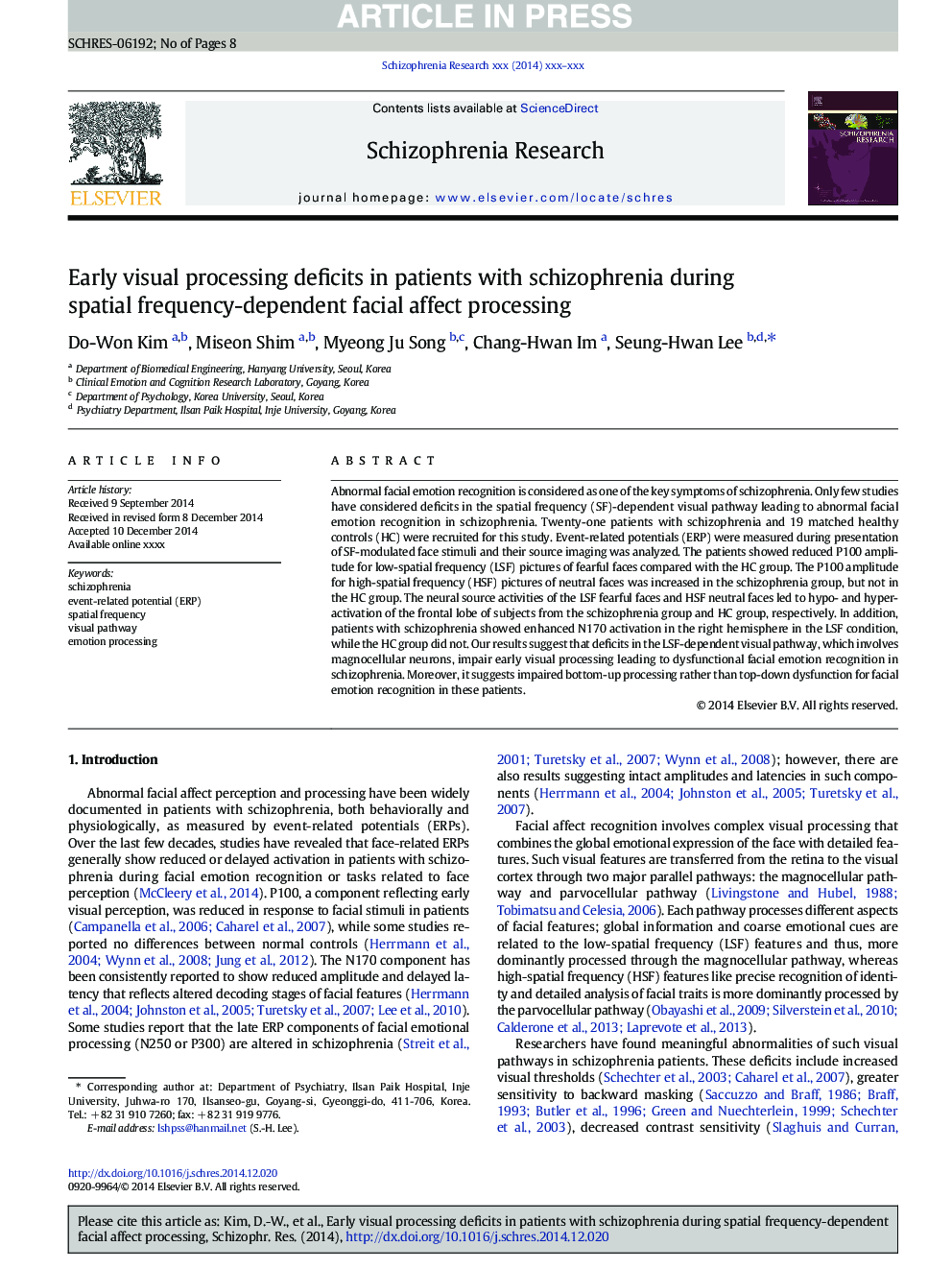| Article ID | Journal | Published Year | Pages | File Type |
|---|---|---|---|---|
| 6824319 | Schizophrenia Research | 2015 | 8 Pages |
Abstract
Abnormal facial emotion recognition is considered as one of the key symptoms of schizophrenia. Only few studies have considered deficits in the spatial frequency (SF)-dependent visual pathway leading to abnormal facial emotion recognition in schizophrenia. Twenty-one patients with schizophrenia and 19 matched healthy controls (HC) were recruited for this study. Event-related potentials (ERP) were measured during presentation of SF-modulated face stimuli and their source imaging was analyzed. The patients showed reduced P100 amplitude for low-spatial frequency (LSF) pictures of fearful faces compared with the HC group. The P100 amplitude for high-spatial frequency (HSF) pictures of neutral faces was increased in the schizophrenia group, but not in the HC group. The neural source activities of the LSF fearful faces and HSF neutral faces led to hypo- and hyperactivation of the frontal lobe of subjects from the schizophrenia group and HC group, respectively. In addition, patients with schizophrenia showed enhanced N170 activation in the right hemisphere in the LSF condition, while the HC group did not. Our results suggest that deficits in the LSF-dependent visual pathway, which involves magnocellular neurons, impair early visual processing leading to dysfunctional facial emotion recognition in schizophrenia. Moreover, it suggests impaired bottom-up processing rather than top-down dysfunction for facial emotion recognition in these patients.
Keywords
Related Topics
Life Sciences
Neuroscience
Behavioral Neuroscience
Authors
Do-Won Kim, Miseon Shim, Myeong Ju Song, Chang-Hwan Im, Seung-Hwan Lee,
